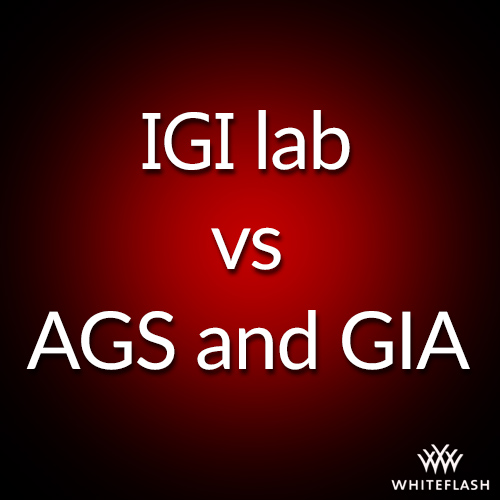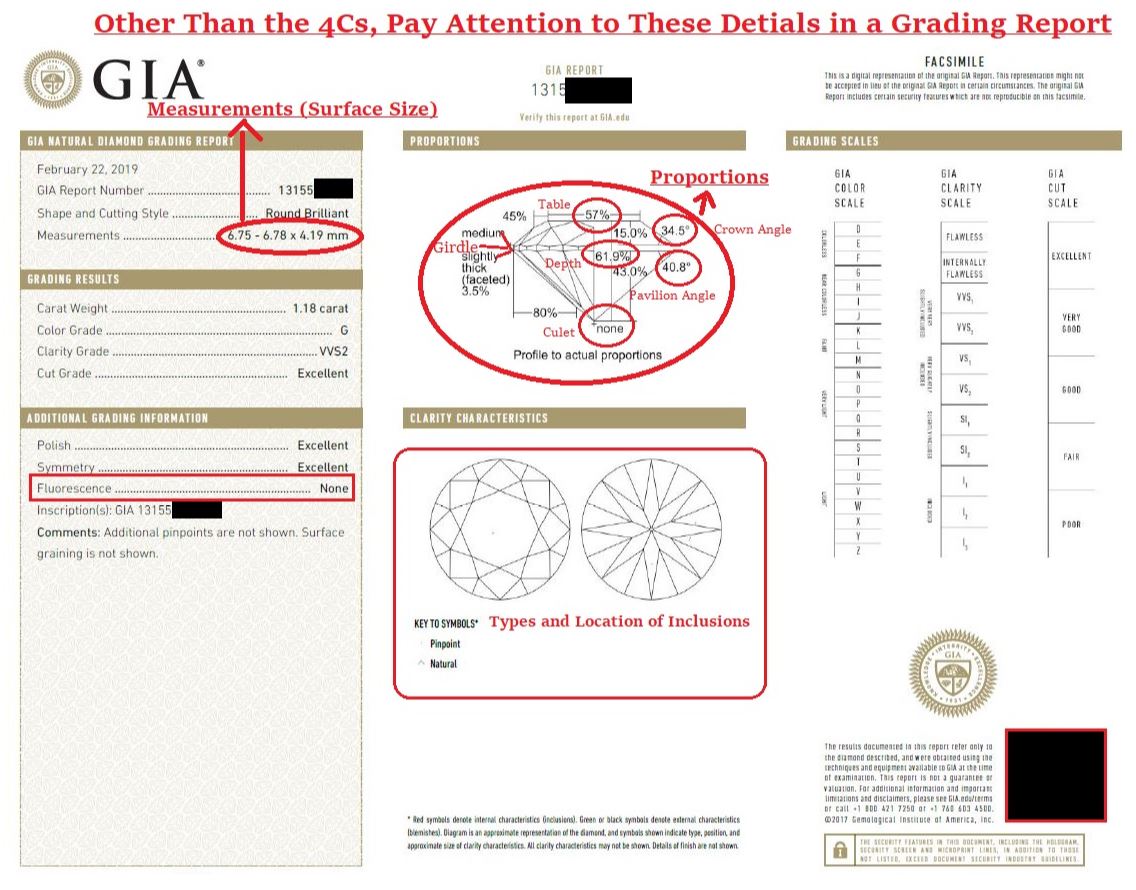
However, there is still a small acceptable margin for subjectivity in this process - this is called “tolerance”. Most gem laboratories will have their stones graded by several gemologists, and then take an average of all responses submitted. A gemologist who had a horrendous sleep because they just broke up with their boyfriend might be harsher on a diamond than one who slept in and had pancakes for breakfast. This is why it’s so important to work only with trustworthy, ethical gemological laboratories like the GIA or AGS.Īnother thing to remember is that despite being meticulously trained scientists with years of industry experience, gem graders are still human beings. A stone that the GIA grades as G color VS2 might be graded as J color VVS1 by a lab like IGI or EGL. What gives?Īs we’ve seen, some gem labs grade more stringently than others, and some lean upon their grades in order to benefit the retailer, who is their primary customer.
#IGI VS GIA UPDATE#
If you end up with two (or more) diamond reports - maybe you wanted a second opinion other than the one provided with your purchase, or maybe one is a more recent update since the one you’ve had for years - you may be surprised to see that the information on the reports doesn’t quite match up even though they’re talking about the exact same stone. It never hurts to have both a grading report and an appraisal - you can read about why an appraisal is always a good idea. It is simply an identifying blueprint of what makes your diamond unique and beautiful. Unlike a jewelry appraisal which lists a piece’s financial value for insurance or resale purposes, a diamond report does not talk about money. It is not the same as a diamond appraisal.
 any treatments that have been done (such as color treating)Ī diamond report shows why and how your diamond is a one-of-a-kind individual. In the event that your jewelry is lost or stolen, or if you want to resell it at a later date, or if you ever need to prove ownership of your stone, this document has all the information.Ī diamond report will list the following diamond characteristics: Here’s the big-ticket question: do you need a diamond grading report sitting in a drawer in order to wear and enjoy your diamond jewelry?īut even if you don’t take it out and look at it every day, there will certainly be times in your life when you’ll be very glad you have one.Ī diamond certificate - sometimes called a diamond grading report or a diamond dossier - is essentially an identification card for your unique diamond. Originally an educational institute (a tradition the GIA carries on today), it wasn’t until the 1950s that they began releasing their globally accepted diamond certificates. In 1931, Shipley founded the Gemological Institute of America as a way to share that knowledge with others. He took it on himself to learn everything he could about the industry (a man who admits when he’s wrong and then goes out to try and learn more?! swoon.). After an early career working as a jewelry seller, Shipley realized how little he really knew about gemology. This all changed with an American man named Robert M. Sellers came up with their own descriptions and benchmarks for what made a beautiful and valuable diamond - sometimes making it up as they went along - and a consumer had no way of knowing what sort of value they were getting for their money. Up until about a hundred years ago, fine jewelry was sold with absolutely no standardization from one jeweler to another. How do you know which diamond certificates are trustworthy? Which one should you choose when you need a grading report for your diamond? Let’s learn about some of the major players of the fine jewelry industry.ĭiamond jewelry has been around a lot longer than diamond grading reports. And with acronyms like IGI vs GIA vs AGS, they don’t make it easy to distinguish between labs! Some are more lenient with their grading standards than others, and some even use completely different sets of criteria. The GIA is generally considered the gold standard for diamond grading in the industry, but did you know that there are other major gem labs as well? Surprisingly, not all of these laboratories function in the same way. Their gospel - set out in official, color-coded grading reports and industry newsletters - is the source of diamond values across the entire world.
any treatments that have been done (such as color treating)Ī diamond report shows why and how your diamond is a one-of-a-kind individual. In the event that your jewelry is lost or stolen, or if you want to resell it at a later date, or if you ever need to prove ownership of your stone, this document has all the information.Ī diamond report will list the following diamond characteristics: Here’s the big-ticket question: do you need a diamond grading report sitting in a drawer in order to wear and enjoy your diamond jewelry?īut even if you don’t take it out and look at it every day, there will certainly be times in your life when you’ll be very glad you have one.Ī diamond certificate - sometimes called a diamond grading report or a diamond dossier - is essentially an identification card for your unique diamond. Originally an educational institute (a tradition the GIA carries on today), it wasn’t until the 1950s that they began releasing their globally accepted diamond certificates. In 1931, Shipley founded the Gemological Institute of America as a way to share that knowledge with others. He took it on himself to learn everything he could about the industry (a man who admits when he’s wrong and then goes out to try and learn more?! swoon.). After an early career working as a jewelry seller, Shipley realized how little he really knew about gemology. This all changed with an American man named Robert M. Sellers came up with their own descriptions and benchmarks for what made a beautiful and valuable diamond - sometimes making it up as they went along - and a consumer had no way of knowing what sort of value they were getting for their money. Up until about a hundred years ago, fine jewelry was sold with absolutely no standardization from one jeweler to another. How do you know which diamond certificates are trustworthy? Which one should you choose when you need a grading report for your diamond? Let’s learn about some of the major players of the fine jewelry industry.ĭiamond jewelry has been around a lot longer than diamond grading reports. And with acronyms like IGI vs GIA vs AGS, they don’t make it easy to distinguish between labs! Some are more lenient with their grading standards than others, and some even use completely different sets of criteria. The GIA is generally considered the gold standard for diamond grading in the industry, but did you know that there are other major gem labs as well? Surprisingly, not all of these laboratories function in the same way. Their gospel - set out in official, color-coded grading reports and industry newsletters - is the source of diamond values across the entire world. 
When you start off on your diamond shopping adventure, you’ll often hear jewelry retailers talking about gemological laboratories (namely the Gemological Institute of America and the International Gemological Institute, among others) like they’re some sacred, esoteric halls of all knowledge.






 0 kommentar(er)
0 kommentar(er)
